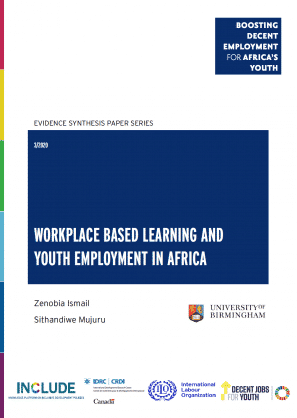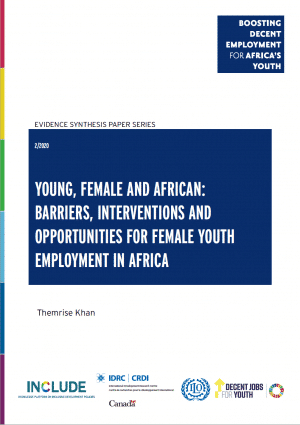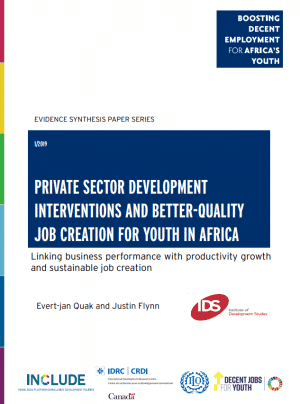
In the frame of the ‘Boosting decent employment for Africa’s youth’ partnership between INCLUDE, IDRC and ILO, under the umbrella of the Global Initiative on Decent Jobs for Youth, a series of evidence synthesis papers will be released in the coming years. Led by INCLUDE, these papers will take stock of existing evidence on themes relevant to the youth employment debate. This third paper in the series was prepared by Zenobia Ismail and Sithandiwe Mujuru from the Governance and Social Development Resource Centre (GSDRC) at the University of Birmingham. ‘Workplace Based Learning and Youth Employment in Africa’ reviews and synthesises literature on the evidence on workplace-based learning interventions in Africa.
Workplace-based learning is a supply-side intervention for addressing youth employment, which offers limited potential to bridge the supply of and demand for skills in Africa. In the formal sector, stronger linkages between those who supply workplace-based learning (mainly providers of technical and vocational education and training) and potential employers must be fostered. In the informal sector, traditional or informal apprenticeships must be upgraded through the provision of training for mastercraftpersons, contracts for apprentices and certification of skills.
Author’s main message
Workplace-based learning is more effective as a youth employment intervention if supported with policies that stimulate demand for young workers. Such policies encompass developing priority sectors in the economy and providing effective labour market information systems, which can better coordinate the supply of skills with the demand for workers. In addition, it is essential to improve the quality of general primary and secondary education as this provides critical foundation skills that enhance the employment prospects of people engaged in workplace-based learning activities.
Key findings
- The main conduits for workplace-based learning in Africa are technical and vocational education and training (TVET) provided or regulated by national governments and informal or traditional apprenticeships.
- Several African countries provide TVET at secondary and tertiary levels, but places are scarce and skewed towards those with more income or at least some secondary education.
- TVET is generally under-funded and hampered by capacity constraints such as limited number of qualified trainers, weak curricula, outdated technology, poor infrastructure and equipment and inadequate linkages with potential employers.
- Most workplace-based learning in Africa occurs through informal or traditional apprenticeships, but the poorest and those without at least some primary education can be excluded.
- The informal or traditional apprenticeships offer variable quality of training and working conditions. There are concerns regarding child labour, hazardous working conditions and long hours.
- There is a tendency for female apprentices to pursue traditionally female trades such as hairdressing, dressmaking or beauty services.
- Informal or traditional apprenticeships can be upgraded through training for master craftpersons, contracts for apprentices and certification of skills.
- Literacy and numeracy problems undermine the performance of those pursing TVET and informal or traditional apprenticeships. Hence, it is vital to improve the quality of general primary and secondary education.
- TVET and informal apprenticeships operate similarly across a range of African countries regardless of wealth.



